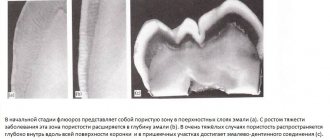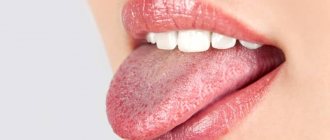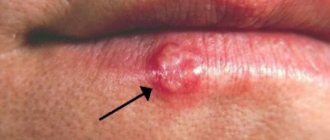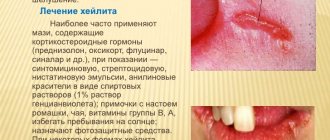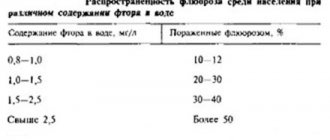Contracture (from the Latin contracture - tightening) is a temporary or permanent restriction of movement in a joint, as a result of which the limb cannot fully bend or straighten.
Contracture can be caused by diseases of the joints, nerves, blood vessels, muscles, as well as impaired elasticity of the skin and tendons.
1
Contracture. Diagnosis and treatment
2 Contracture. Diagnosis and treatment
3 Contracture. Diagnosis and treatment
The occurrence of joint contracture
According to the mechanism of occurrence, contractures are divided into 3 groups: active ( neurogenic ), passive ( structural ) and combined .
Passive contractures (or local) are distinguished by the fact that joint mobility is limited by mechanical obstacles in the joint itself or in neighboring tissues (skin, fascia, tendons, muscles).
With active contracture, there are no mechanical reasons limiting movement either in the joint itself or in the tissues surrounding it. But there is irritation from the nervous system, leading to prolonged tonic tension of certain muscle groups. An imbalance in muscle balance leads to the fact that the joints begin to “cramp”.
The initial active contracture is unstable and can be successfully corrected: the elimination of neurological disorders helps to reduce the limitation of mobility or its complete disappearance. In the absence of treatment and the progression of the disease, the contracture becomes persistent, and components of the passive form appear in it. Treatment of such contracture takes a much longer period of time.
In some cases, there are combined forms of joint stiffness, in which it is difficult to find the root cause of the disease.
If treatment for contracture is not started promptly, the disease can lead to limited mobility and disability. The severity of the condition and the disability group are determined by the degree of stiffness, the number of affected joints and the general limitation of motor activity.
Treatment of contractures with Botox
Along with traditional treatment, muscle injections of botulinum toxin can be prescribed to eliminate contractures. For example, Botox for contracture of facial muscles helps to create a blockade of the nerve transmission process, due to which the muscles relax and pain is eliminated. This strong neurotoxin is used at all stages of diseases. It is a fast-acting and safe drug that does not have any significant side effects.
Physiotherapy and reflexology treatment methods, as well as other therapeutic measures used in the Rehabilitation Center of the Yusupov Hospital, have an anti-inflammatory and immunomodulatory effect, help improve muscle tone and elasticity, eliminate muscle spasms, muscle hypertonicity, increase joint mobility, improve blood circulation, eliminate congestive phenomena and cessation of the development of degenerative-dystrophic changes.
The complex effect provides a significant improvement in motor activity, elimination or significant reduction of disease symptoms (including pain), prevention of the development of complications and improved quality of life. At the same time, in the treatment of muscle contractures in the Yusupov Hospital, pharmaceuticals (except for extreme necessity), surgical interventions are practically not used, and in addition, negative side effects are excluded.
An appointment with a rehabilitation specialist can be made by calling the Yusupov Hospital or online on the clinic’s website.
Symptoms of contracture
The main symptom of all types of disease is difficulty in flexion and extension of the joint.
For example, with a contracture of the elbow, a person cannot move the forearm, straighten or bend the arm. With congenital joint contracture, the affected arm lags behind in development.
Knee damage is characterized by its deformation, as well as impaired support function, pain, swelling, and shortening of the leg.
1 Contracture. Diagnosis and treatment
2 Contracture. Diagnosis and treatment
3 Contracture. Diagnosis and treatment
What are the reasons for the development of muscle contracture?
The occurrence of contractures can be caused by joint abnormalities:
- deformation and impaired mobility;
- injuries;
- chronic diseases (frequent inflammatory processes).
In addition, contractures can develop with muscle dystrophy and cerebral palsy.
Risk factors for the development of contractures include the following conditions: inflammatory processes in the tendons, rheumatoid arthritis, poliomyelitis, scars, burns, prolonged stay in an immobilized state, polyneuropathy (contracture of the muscles of the lower extremities in this disease is a frequent companion), coxarthrosis (with this pathology it can contracture of the adductor muscles of the thigh develops).
Types of disease
In addition to the classification into active, passive and combined contractures, there are many other divisions:
- by restriction of movements - extension, flexion, rotation (limitation in turning and when making circular movements), as well as adduction and abduction;
- by the time of onset of the pathology (acquired and congenital);
- in terms of functionality - functionally disadvantageous (the performance of the limb is not preserved) and beneficial (the mobility of the joint is limited, but the performance is preserved).
Active contractures are represented by the following types:
- central neurogenic (cerebral and spinal), cerebral occur with brain damage, spinal - with damage to the spinal cord;
- peripheral neurogenic - appear when peripheral nerves are damaged, most often accompanied by pain;
- psychogenic - appear during a hysterical attack, disappear at the end of the attack.
Passive contractures consist of the following types:
- myogenic (appear as a result of muscle shortening during reflex contraction or an inflammatory process);
- arthrogenic (due to changes in the ligamentous-capsular apparatus of the joint or articular ends);
- dermatogenic (after the formation of scars on the skin as a result of burns or inflammatory diseases);
- tendogenic (due to shortening of tendons as a result of the formation of adhesions);
- immobilization (caused by prolonged restriction of movements of the arms and legs);
- ischemic (appears after fractures due to limited blood supply to the extremities);
- desmogenic (as a result of wrinkling of fascia and ligaments during deep injuries or chronic inflammatory processes. One of the most common types of desmogenic contractures is Dupuytren's contracture , which we will talk about in more detail).
Dupuytren's contracture
Dupuytren's contracture (or palmar fibromatosis) is a fibrous degeneration of the palmar aponeurosis, which, according to doctors, occurs due to a genetic predisposition. This pathology occurs 6-10 times more often in men than in women.
In most cases, the ring finger or little finger on one hand is affected; less often, the pathological process affects all fingers on both hands and feet.
A small compaction appears on the surface of the palm, similar to a nodule, which begins to gradually increase in size, cords appear, and the tendon shortens. This leads to the fact that the affected fingers become increasingly difficult to bend and straighten, and over time, immobility of the interphalangeal and metacarpophalangeal joints develops. The hand loses its functions, which causes loss of ability to work and self-care skills.
Classification of Dupuytren's contracture
1st degree of disease . The node reaches a size of about 1 cm, and some pain appears when touched. Fingers bend and straighten. Mobility in the joints is preserved.
2nd degree of the disease . The node begins to degenerate into a scar, which extends to the phalanx of the affected finger. Mobility in the affected joint is impaired. The finger with contracture is at an angle to the inner side of the palm of 30-90 degrees. The extension of the joint is impaired.
3rd degree contracture . The fibrous cord extends to the entire finger, the skin forms folds. Movement in the joints sharply worsens. Contracture appears in the metacarpophalangeal joints, which leads to complete ankylosis.
4th degree of the disease . It is possible for several fingers to fuse into a large scar. The fingers are gathered into a fist, which is completely impossible to straighten. The activity of the hand is completely impaired, which leads to disability of the patient.
1 MRI of joints
2 Treatment of contracture
3 Treatment of contracture
Signs of muscle contracture
With muscle contractures of any severity, the patient experiences severe pain, which prevents forced stretching of the affected muscle and bringing it to a normal functional state. The occurrence of pain in muscle tissue during movement is a sign of contracture.
In patients with muscle contractures, flexion-extension functions are impaired; the limbs cannot fully bend and straighten.
When contracture of the masticatory muscles occurs, the movements of the lower jaw are impaired, as a result of which the ability to open the mouth normally is limited.
Contracture of the muscles of the face and neck is accompanied by the appearance of facial asymmetry and pathological tilts of the neck and head.
With contractures of skeletal muscles, the appearance of distortions and asymmetries of various parts of the body and limitation of body tilts to the sides are noted.
Causes of contracture
Contracture most often occurs as a complication after various joint injuries: fractures, bruises, dislocations, inflammation, gunshot wounds, as well as diseases of the nervous system.
At risk are not only athletes and manual workers (loaders), who have an increased risk of damage to bones, muscles and joints, but also musicians (violinists, pianists), massage therapists, who may develop finger contracture as a result of prolonged overexertion.
Also, causes of joint stiffness can be degenerative-dystrophic and inflammatory lesions of the joints, diseases and injuries of the brain, diseases of the spinal cord, long-term placement of a limb in a cast, etc.
What is muscle contracture?
Muscle (myogenic) contracture is a condition of muscle tissue in which muscles shorten and their extensibility decreases, which is associated with injuries, inflammatory processes, degenerative changes, damage to nerve fibers, or a sharp reflex contraction due to irritation of muscle fibers (mechanical, chemical or thermal).
Muscle contractures can have different localizations - they can affect skeletal muscles, facial muscles (facial muscle contracture), masticatory muscles (masticatory muscle contracture), neck muscles (neck muscle contracture).
Diagnosis of contracture
The initial diagnosis is based on the patient's complaints and the appearance of the affected limb.
To determine the degree of joint stiffness, physical examinations are used to assess the range of motion during extension and flexion of the damaged part of the body.
One of the main diagnostic methods is radiography.
Depending on the nature and type of pathology, additional research methods may be used.
For neurogenic contracture, you will need to consult a neurologist; for hysterical contracture, you will need to consult a psychotherapist. For passive contracture, MRI (or CT) of the joint, as well as electroneuromyography of the joints, are prescribed.
In case of nonspecific or specific inflammation of the joints, before treating contracture, it is necessary to treat the underlying disease by a rheumatologist, phthisiatrician or venereologist.
Symptoms of muscle contractures
You need to be careful and not miss the first “alarm bells” that may indicate the development of pathology:
- At the initial stage of the disease, the symptoms appear vaguely, and the patient may not pay attention to them. However, an alarming signal should be a feeling of fatigue and aching pain even after minimal physical activity, numbness and stiffness, especially in the morning after waking up, dry skin in the affected area.
- As the disease progresses, difficulty and pain arise when trying to fully bend or straighten a limb subject to contracture.
- In later stages, there is an inability to fully bend or straighten the limb.

